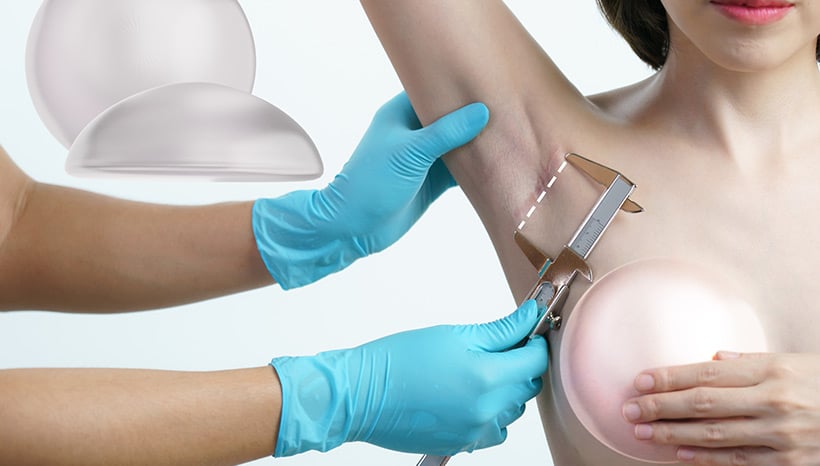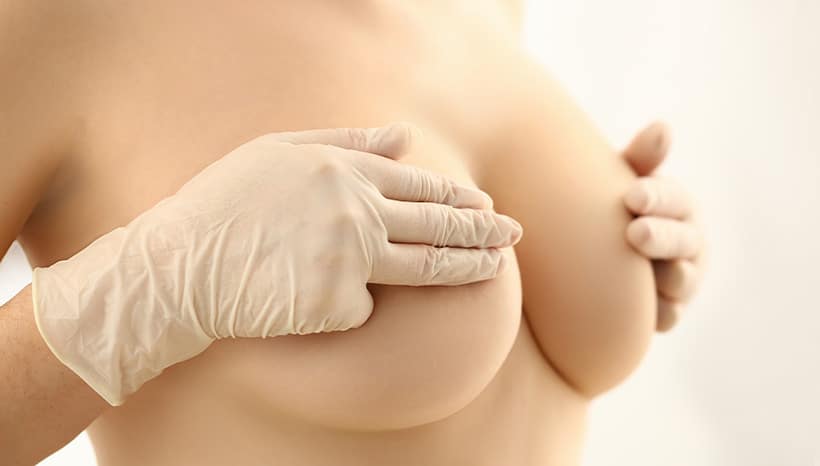Virginia, Washington D.C. and Maryland.
Post-Operative Instructions for Breast Implant Removal
Medications After Breast Implant Removal
- Pain: Most pain after implant removal can be managed with Tylenol. Do not exceed 4,000 mg of Tylenol in any 24-hour period.
- Nausea: A common side effect after general anesthesia and strong medications. If you are experiencing nausea, your physician can prescribe an anti-nausea medication.
- Medications to Avoid: Take only medications approved or prescribed by your surgeon.
Nutrition After Breast Implant Removal
- Diet: A light low-fat diet is best after surgery. You may start a regular diet the day after your surgery, as long as you are not feeling nauseous or vomiting. Start with liquids for the first few hours after surgery and then slowly advance to more solid foods.
- Hydration: Stay hydrated by drinking 8 -10 glasses of water a day. Avoid alcohol for 48 hours and while taking pain medications.
Activity After Breast Implant Removal
- Movement is Important: Make sure you are up and walking around immediately after your surgery. When lying down in bed or on the couch, make sure you are moving your legs and ankles. Take deep breaths frequently to keep your lungs clear.
- Exercise: Normal activity can be resumed a few days after surgery. You can resume an exercise regimen 1 week after surgery, though start easy and build back up to your previous exercise levels. Swelling may transiently be worse with exercise.
- Driving: Do NOT operate a vehicle or make important decisions until you have been off strong pain medications for 24 hours. Use good judgment.
- Travel: Automobile travel can resume immediately, though frequent breaks are needed approximately every 2 hours to prevent blood pooling and clots. Airline travel is restricted until 1 week postop. You will notice increased swelling with airline travel which can happen even 6-8 weeks postop due to the pressure changes that occur.
- Return to work: Most patients require approximately 2-5 days off work depending on their job responsibilities. Returning to work with a light schedule initially or even parttime can be beneficial as well.
- Sexual Intercourse: Sex can be resumed when you feel ready with no restrictions.
Bathing After Breast Implant Removal
- Showering: You may shower with assistance the day following surgery. Incisions are covered with a waterproof dressing and require no attention.
- Hot Tubs/Baths/Swimming Pools: No baths or jacuzzi until your incisions have healed, and approved by your surgeon, which is usually around 2 weeks.


How To Take Care Of Your Incisions After Breast Implant Removal
- Incisions: Your incisions are covered with a waterproof dressing. No dressing changes or incision care is required. After your first postop visit, the dressing will be removed, and tape applied. Additional tape is provided so you can continue a planned scar regimen.
- Stitches: All stitches are dissolvable.
What To Expect After Breast Implant Removal
- Drainage: Drainage can occur from the incision sites for the first 24-72 hours. The drainage will be blood tinged. You may use gauze or a light pad to reinforce post-op dressings if this occurs.
- Bruising: You can expect to have bruising. Most bruises will heal after about 2-3 weeks. The bruise will go from a purplish color to a yellow/green shade as it starts to resolve.
- Swelling: Swelling is to be expected and will resolve over the next few weeks.
- Itching: Itching at the incision sites is normal for a few days. You may take Benadryl to help with this.
- Sensory Changes in Skin: You may notice numbness or a tingling sensation around your incision sites. You can expect a return of normal sensation after a few months.
- Scarring: Scars are small and minimal and may take up to a year to fully heal. Tape is used for scar management, though a topical silicone gel can also be used if desired.
Do Not’s After Breast Implant Removal
- DO NOT apply hydrogen peroxide to incision sites. Keep postop dressings in place until follow-up.
- DO NOT soak in baths, jacuzzies or hot tubs until all incisions have fully healed.
- DO NOT take Aspirin, Ibuprofen, Naproxen, or other blood thinners until your surgeon advises you it is safe.
- DO NOT apply heating pads or ice packs to the treated areas unless otherwise instructed by your surgeon.
Emergency Situations After Breast Implant Removal
WHEN TO CALL THE OFFICE (703-481-0002) OR GO TO THE HOSPITAL
- Signs of Infection: Spreading redness, worsening swelling, increased drainage or pus drainage, worsening pain, warmth at incision site and temperature over 101°F.
- Excessive Bleeding: If the dressings are saturated with bright red blood and you are having to make very frequent dressing changes.
- Other Emergency Situations: Shortness of breath or difficulty breathing, chest pain, lightheadedness that does not quickly resolve, severe vomiting, pain, or asymmetric swelling in your legs.